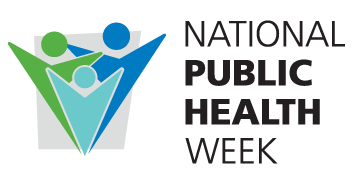Workforce Investments for A Robust Health Ecosystem
April 11, 2025
To help commemorate National Public Health Week 2025, this publication is part of an NGA series that explores policies, programs and considerations to improve population health.

Addressing health needs through state and employer solutions not only strengthens local communities – it’s good for business. State economies benefit when they have a healthy workforce, and there is data that shows the current structure of the healthcare system is not yielding better health outcomes, which reduces employee productivity. Acute and chronic health conditions can result in employee absenteeism, reduced productivity in the workplace, and expensive health care coverage for employers that may not directly address the issue. Mental health conditions, such as depression and anxiety, can cost employers $44 to $51 billion dollars annually in lost productivity as well, according to the Centers for Disease Control and Prevention (CDC).
Proactive measures such as vaccinations and health screenings help in prevention and early detection of disease, which can allow for timely intervention and reduce the number of workdays individuals miss due to illness. A study by the CDC found that preventative health screenings may reduce employee absenteeism by 27%, especially for common risk factors such as hypertension, high cholesterol, and low blood sugar. By maintaining a healthier workforce pool, employers can minimize disruptions to business operations and ensure consistent productivity while avoiding costs associated with hiring temporary staff or reducing output. Research also demonstrates that organizations that prioritize employee health can better retain talent and have a competitive advantage in the job market. According to a Harvard study, every dollar spent on workplace disease prevention and wellness programs resulted in a $2.73 decrease in absenteeism expenses and a $3.27 decline in medical costs, resulting in a 6:1 return on investment.
State of Health is a program sponsored by the Colorado Division of Human Resources that incentivizes employees to participate by offering health insurance premium discounts for up to one year. Through virtual health coaching, fitness portals, and skill groups that encompass nutrition, stress management, and goal setting, participants can improve their health and wellness. Participants earn discounts for additional 12-month periods by completing more wellness requirements.
Former Governor Kristi Noem established the Employee Health Office in 2024 under the Bureau of Human Resources and Administration. Under the Office, the LiveWellSD Program aims to help employees and their families improve their mental, physical, and social well-being. The program offers financial incentives, such as contributions to a health savings account, for those who complete a health assessment and annual wellness exam.
Employers can take a variety of steps to promote mental health in the workplace. Of the 53 million Americans experiencing mental health conditions, only 46% have access to mental health services. According to Mental Health America, for every $1 spent on mental illness treatment, there is a $4 return in improved health and productivity for employees. Workplace wellness programs, telehealth flexibilities, and policies that allow those with mental health conditions to remain in their jobs or return back to work can strengthen employee mental well-being.
The California Legislature established the Commission for Behavioral Health in 2018 under the Mental Health Services Act. Under this Act, the Workplace Mental Health project was established to create five standards intended to increase public, employee, and employer awareness of mental health services and create pathways to treatment and recovery.
In August 2024, Governor Mike DeWine launched the Ohio Recovery Friendly Workplace program under the RecoveryOhio initiative. This program is designed to expand career opportunities for people recovering from a substance use disorder or mental health condition, boost local Ohio economies, and combat stigma surrounding addiction and mental illness. Hamilton and Summit County Public Health departments have established recovery friendly workplace programs and have empowered employers to promote worksite wellness. According to the National Safety Council, every employee that recovers from a substance use disorder saves their employer an average of over $8,500.
The NGA Center for Best Practices is committed to offering technical assistance and support to states that want to learn more about these initiatives. NGA is tracking health trends at the state and federal level and acknowledges potential federal funding changes that could impact the reach of available programs. The NGA Center for Best Practices will continue to publish resources, support technical assistance requests, and host interactive webinars to cultivate a platform for subject matter experts and NGA members to share experiences and best practices. For more information, please contact Chyenne Tran (ctran@nga.org).
- Good Health is Good Business – Bipartisan Policy Center
- Workforce Development State Strategies: A 50 State Scan of Best Practices From Recent Action – Center for American Progress
- Employee Wellbeing is Key for Workplace Productivity – Gallup
This publication was developed by Chyenne Tran with the National Governors Association Center for Best Practices.
Search
RECENT PRESS RELEASES
Related Post




